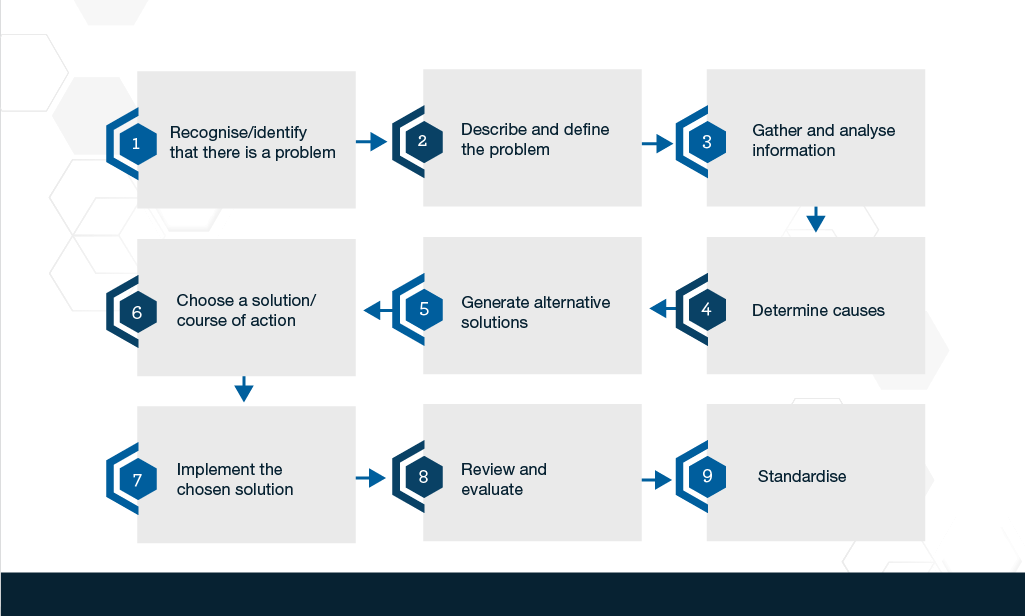
We make decisions at work every day – big and small, good and bad. Working in a leadership position entails stepping into the office every day with many choices to be made. This means that being an effective decision-maker isn’t just a nice skill to have in this profession – it’s critical.
In this article, we’ll discuss decision-making styles and processes, so you can embrace your leadership capabilities and become a more effective decision-maker.
Who is involved in making company decisions?
Three groups of people are involved in decisions:
- Those who make them
- Those who must carry them out
- Those who will be affected by them
As you can imagine, every person in this process will have their own needs, wants and desired outcomes. It’s your job as a leader to come to the most effective resolution that will cater to all three groups.
The four decision-making styles
Different decision-making styles can help or hinder a leader when making decisions for their business or team. Before settling on which decision-making process is right for you, you need to figure out what your decision-making style is.
Most experts agree that there are four different decision-making styles. Each has unique understandings and challenges, so it can be incredibly insightful to understand which one best reflects your style.
Analytical decision-making
Analytical decision-makers generally take the longest to come to conclusions as they like to take their time to look at all the options and facts. This style is invaluable when making an important or non-time-sensitive decision. However, you may struggle to make a choice until you’re certain it’s the right one. Sometimes, when making decisions, you will never truly know if it’s the right choice until you’ve chosen. This can stall the process and be tiresome if a decision can’t be reached.
Directive decision-making
Directive decision-makers don’t mind making quick decisions. If you are prompted to make a choice, you’re happy to decide then and there. You don’t like to dwell on details too much, preferring fast results. This style is fantastic when making choices under pressure or with limited importance. However, when you have the time, the results from directive decisions may not always be the best outcome if you don’t take the time to think things through.
Conceptual decision-making
Conceptual decision-makers ‘think bigger’ and the term ‘outside the box’ was essentially coined for them. You may find yourself drawn to different and creative approaches and aren’t afraid to try something new. This style is perfect when innovative outcomes are favoured. However, you can also find yourself biting off more than you can chew if you don’t have a thorough plan to follow through with your big dreams.
Behavioural decision-making
Behavioural decision-makers are great at listening to and respecting the opinions, wants and needs of everyone influenced by their decisions. This is a particularly great soft skill in leadership, as empathy and understanding of your team will help you go far. This style is ideal for mutli-touch decisions that affect an organisation or multiple teams or departments. However, you’ll need to watch out for a tendency to people-please – you can’t please everyone 100% of the time.
What's your Management Trajectory?
Are you wondering how far away you are from your next promotion? Take our quiz to assess your management career pathway.
GO TO QUIZ
Which decision-making style is for you?
Think critically and honestly about your decision-making style and what sort of problems you might face in the decision-making process as a result of your style. How can you ensure these don’t become an issue? What can you learn about the different styles and their optimal uses for different kinds of decisions? Be aware of potential setbacks and make a plan to tackle them head-on.
Decision-making red flags and how to avoid them
Three red flags can contribute to poor decision-making. These include:
- Inappropriate self-interest
- Distorting attachments to people, places or things
- Misleading memories – memories that take us down the wrong path
To counteract these red flags, use these safeguards to ensure you don’t fall trap to bias.
- Ensure fresh, alternating experiences and/or analysis in the process
- Include robust and challenging debate about the process, assumptions, decision model, criteria, evaluation and risk analysis
- Ensure strong governance in decision-making authority
- List good boundaries
- Ensure decision-makers have no inappropriate self-interest
- Identify who the key decision-makers are
Download our FREE 'Your Career in Leadership & Management' Guide
Find the latest information in our eBook about a career in leadership and management, including current job opportunities, soft skills you need, salary information and more.
What does a good decision-making process look like?
McKinsey & Company released a series of papers on decision-making. They reported that decisions initiated and approved by the same person produced the worst results. Decisions made without any strategic planning or context also generated extremely poor results. To avoid these unfavourable outcomes, McKinsey suggested three themes that contributed to organisations achieving good decision outcomes.
1. Assessment
The first theme is a tough and accurate assessment which assesses:
- The situation
- The ability to execute the decision
- How to evaluate decisions
- Crucial factors that may impact the decision
- Competitor capabilities and reactions
- Risk analysis
2. Practice
The second theme is a strong ‘business case’ approach to the process and includes:
- Listening to dissenting voices
- Identifying and managing bias
- Identifying and considering alternatives and barriers
- Analysing sensitivity
- Reviewing experience
- Creating decision criteria
- Ensuring organisational goals have predominance over the business unit and individual goals
- Involving participants in the decision-making process based on their skills and experience
3. Targets
The third theme considers financial and strategic targets in setting outcomes for the short-term and long-term.
Decision-making process example
Using these three themes, we can now use them to create a more detailed process.
The decision-making process can be big, but it doesn’t need to be bad. With your new understanding of your decision-making style, red flags to look out for and the perfect process, you can have confidence in whatever decision you make next.

Your Career in Leadership and Management
Do you want to learn more about leadership and management skills you need to be a good leader, emerging job roles and salaries, and recent industry insights?
Discover your career in leadership and management.
LEADERSHIP AND MANAGEMENT CAREER PAGE







